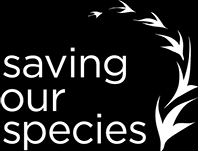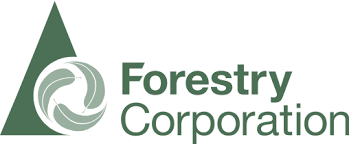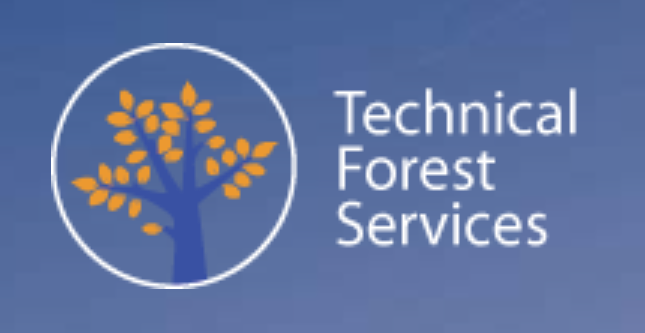Research and evaluation
The Coastal IFOA research and evaluation program provides the monitoring program the opportunity to respond to changes to environmental conditions, policy, knowledge or technology and provide a program to investigate best practice forest management and monitoring.
Research program
Monitoring plan - Research program
The proposed research projects will highlight risks and find better ways the conditions and protocols of the Coastal IFOA can achieve their outcomes.
Project R1: Integrating data to assess Coastal IFOA outcomes
Project R1: Integrating data to assess Coastal IFOA outcomes
 |
 |
Leading forest modelling scientists at the Western Sydney University and FlintPro have teamed up to improve approaches to integrate large and diverse datasets the program is now generating on an on-going basis – for example, forest structure and fauna occupancy. This work will lead to fit-for-purpose modelling and spatial capability to support cost-effective assessment of Coastal IFOA conditions and outcomes at multiple scales.
Project R2: Strengthening the evidence base to assess damaged trees
Project R2: Strengthening the evidence base to assess damaged trees
 |
At the 2022 Coastal IFOA annual health check, parties agreed to develop an evidence base to objectively assess the impact of injuries to retained trees during forestry operations. Currently there is no agreed understanding of the type and level of injuries that retained trees can sustain above which they are unable to provide the ecological function for which they were retained.
The types of retained trees included in the assessment are prescribed in the Coastal IFOA, such as hollow-bearing trees, nectar trees, giant trees, dead standing trees, Glossy Black cockatoo feed trees, Glider sap feed trees and Koala browse trees.
We engaged researchers from the Hawkesbury Institute for the Environment, Western Sydney University to review the scientific literature covering current knowledge of how trees respond to physical injuries to the stem and crown. The review also investigated recovery times and/or the impacts on tree longevity following damage.
Findings
Based on scientific literature, the researchers found trees impacted by mechanical injuries during forestry operations respond in similar ways to those trees impacted by fire, drought and storms. Trees either resprout from epicormic buds beneath the bark or from underground lignotubers depending on the species. Only a small number of eucalypt species cannot resprout following severe injury and rely on seedling regeneration to recover.
Based on this literature review and evidence from field observations, the researchers have assessed the risk to the ongoing function of retained trees due to different types and levels of injury. The researchers have set out an approach, including further field data to set objective injury thresholds for different types of injuries for retained trees as codified under the Coastal IFOA.
About the researchers
- Professor Brendan Choat is a national leading expert in plant physiology, specialising in quantifying physiological thresholds of tree mortality.
- Dr Rachael Nolan is a leading researcher in the new field of “pyro-ecophysiology”, working at the intersection of plant ecophysiology, fire ecology and forest fire management.
- Dr Eli Bendall leads field campaigns monitoring drought recovery of trees and post-fire tree mortality across south-eastern Australia.
Project R3: Reviewing the use of temporary log crossings in NSW coastal state forests
Project R3: Reviewing the use of temporary log crossings in NSW coastal state forests
 |
- Final report - Review of the use of temporary log crossings (April 2023)
- Research note - Temporary log crossings in NSW coastal state forests (May 2023)
The Coastal IFOA Monitoring Program includes annual health checks to consider the programs results and further opportunities to expand the evidence base to inform forest management. The 2021 health check initiated an assessment of the effectiveness of temporary log crossings in State Forests.
A temporary log crossing is where logs are placed in a drainage feature to enable the short-term passage of a machine or vehicle. There are knowledge gaps around how well their potential impacts on waterways are being managed.
The Steering Committee engaged Jacobs Group (Australia) Pty Ltd to review the use of temporary log crossings in NSW coastal hardwood state forests and the effectiveness of the current conditions for their design and rehabilitation in reducing their impacts on waterways.
Jacobs has delivered a report that:
- reviews published and grey literature on temporary log crossing design and use in NSW and other jurisdictions
- advises on the effectiveness of temporary log crossings compared with traditional causeway crossings
- suggests potential opportunities for adaptive management of the Coastal IFOA
- explores the costs and benefits of further research and proposes monitoring options.
Jacobs advised that temporary log crossings can reduce biophysical impacts compared to traditional causeway crossings in certain forest circumstances, thus improving outcomes for water quality and aquatic habitat. Jacobs identified potential amendments to the relevant protocol that would bring a range of temporary log crossing requirements into alignment with those applied to traditional causeway crossings.
The project was informed by multiple field visits and extensive collaboration with agencies, the Commission team and independent expert Dr Peter Hairsine. We produced a research note to outline the project findings.
Project R4: Koala response to harvesting
Project R4: Koala response to harvesting
 |
 |
 |
Since 2019, researchers at the Australian National University, Western Sydney University and the Forest Science Unit at the NSW Department of Primary Industries have investigated how koalas, and their habitat responded to harvesting in state forests on the NSW North Coast.
The Commission has released as report synthesising the research findings. Overall, the research found the nutritional quality of trees is critical for koala survival and selective harvesting did not have an adverse impact upon koala numbers on surveyed north coast state forests.
More information on the program and the final report can found on the Koala Research page.
Project R5: Novel techniques to detect and monitor Hastings River Mouse
Project R5: Novel techniques to detect and monitor Hastings River Mouse
 |
 |
 |
 |
In 2021, we partnered with the NSW Saving our Species program to test and compare the detectability of the Hastings River mouse using a range of novel survey methods and technologies. This included testing the use of detection dogs and camera traps (with specific set-up for small mammals) against traditional trapping methods.
The use of detection dogs has been identified as a highly effective means of locating threatened, cryptic species, especially when traditional methods are unable to detect low‐density mammal populations.
Canines for Wildlife trained up Miki, a working cocker spaniel, as a Hasting River mouse detection dog. Miki learnt to recognise Hasting River mouse odour through the use of scats and bedding material collected from traps set by field ecologists from Saving Our Species and Forestry Corporation for NSW. Miki also learnt to discriminate between the odour of Hasting River mouse and other small mammals that he will encounter in the environment.
Video - Miki training to become a Hasting River mouse detection dog
As part of work completed for this project, the detection dog demonstrated:
- he recognises and passively indicates on Hasting River mouse odours including scat, fur and bedding
- he can discriminate between Hasting River Mouse and non-Hasting River Mouse small mammal odours in the training facility and in the nearby forest environment
- his field safety, wildlife safety and survey search patterns
Field-based training of the detection dog did not occur as part of this project due to extremely wet weather conditions and the COVID 19 outbreak at the time. Canines for Wildlife continue to train detection dogs Miki and Ash for Hasting River mouse detection.
Project R6: Drones to detect cryptic species
Project R6: Drones to detect cryptic species
 |
 |
 |
The program has committed to explore how technology can improve the probability of detecting a range of species in forestry operations. The program already draws on existing peer reviewed technologies to cost-effectively monitor fauna such as song meters, audio moths and cameras.
The program engaged researchers at the NSW Department of Climate Change, Energy, the Environment and Water’s Drone Hub to investigate the use of drones to improve detection for the koala and greater glider. Drones were fitted with thermal imaging cameras and flown over small pilot areas to collect information on the number and distribution of koalas.
Working also with ecologists at the Forestry Corporation NSW, Drone Hub researchers also used drones fitted with thermal imaging cameras to survey greater gliders. This pilot trialled a field method for validating detection of this highly mobile species in real-time. The team carried out surveys in winter to maximise thermal differentials and detection likelihood.
The full report is available above. Key findings include:
- Drones detected:
- 68 koalas, with 36 verified by drone or ground teams.
- 48 animals (other than koalas), with 13 verified as greater gliders by drone or ground teams.
- Drones fitted with spotlights (>3,000 lumens) and optical zooms with colour sensors can validate thermal detections with high certainty in place of the drone descending or validating using a ground team. This improves survey cost-effectiveness and safety of field personnel.
- Despite costs reducing, deploying drone teams in the field remains expensive. Over time, the training of more pilots will significantly reduce the high costs of using drones, making them competitive with traditional survey methods.
Estimating the probability of detection was out of scope for both species. However, the University of Newcastle is using the koala dataset to spatially model occupancy and calculate the probability of detection for koalas and will report results separately.
Dr Ryan Witt, University of Newcastle recently advised the Commission on using drone-based surveys to assess koala population density changes in response to timber harvesting. Dr. Witt’s options paper identified a Before-After-Control-Impact Paired Series design using drones as an optimal approach, but noted there are significant resource demands, limitations, and costs associated with this type of monitoring.
Project R7: Implications of changing fire intensity and regimes on CIFOA objectives and outcomes
Project R7: Implications of changing fire intensity and regimes on Coastal IFOA objectives and outcomes
 |
- Final report - Risks to Coastal IFOA posed by fires (University of Wollongong, September 2021)
- Media release (October 2021)
The Coastal IFOA monitoring program committed to investigate the risks to achieving Coastal IFOA outcomes under changing fire regimes. The Commission engaged researchers at the NSW Bushfire Risk Management hub, University of Wollongong to provide independent research on the matter.
The research team evaluated:
- the specific risks to achieving the Coastal IFOA objectives and outcomes as result of the legacy landscape scale impacts of the NSW 2019/20 wildfire season
- the broad implications of predicted changing fire regimes on the achievement of the Coastal IFOA’s objectives and outcomes options to mitigate risks.
The researchers found:
- The 2019/20 fires impacted about 3.6 million hectares of forests across all tenures within the mapped Coastal IFOA region.
- Around 60 percent of the total state forest and national park area within this region was burnt, almost half of which was subject to high or extreme fire severity.
- Previous timber harvesting did not increase the fire extent or severity of the 2019/20 fires. However, there is potential for cumulative impacts in harvested landscapes that are subject to fire.
- The 2019/20 fires mean now only 10 percent of forested areas are currently within their recommended fire frequency thresholds.
- Half of state forest and national park area is now classified as ‘vulnerable’, meaning the 2019/20 fires effectively doubled the extent of vulnerable forested vegetation on these tenures.
- Under the climate change scenario of hotter temperatures and little change in rainfall, of the 24 assessed threatened species, seven species are predicted to have their habitat reduced by over 75% by 2070.
The University of Wollongong report is available here.
The data used in the analysis is available on the NSW SEED portal.
Project R8: Expert review of survey and models for Philoria frog species
Project R8: Expert review of survey and models for Philoria frog species
 |
In their recent review of survey and modelling conditions and practices used in the Coastal IFOA, Dr Munks and Dr Bell identified several priority species for further attention including five frog species in the Philoria genus (for example the Mountain Frog, Philora kundagangan).
We engaged Dr. Michael Mahony at Nightvision Ecology and Honorary Professor at the University of Newcastle. Dr Mahony is a research scientist with over 30 years’ experience in Amphibian ecology. He will review existing habitat models and current survey methods for these five Philoria species, and provide advice on ways to improve survey and modelling approaches for each species.
A final report is expected in late 2024.
Project R9: Expert review of bird survey methods and habitat models
Project R9: Expert review of bird survey methods and habitat models
Dr Munks and Dr Bell in their 2024 report outlined a review of habitat modelling and survey methods for multiple fauna species within the Coastal IFOA monitoring program. Species identified by the authors that require priority attention include the Marbled Frogmouth (Podargus ocellatus), Albert’s Lyrebird (Menura alberti) and the Rufous Scrub-bird (Atrichornis rufescens).
We engaged Dr Richard Loyn, Director of Eco Insights and Adjunct Professor with La Trobe University’s Ecology, Environment & Evolution school. Professor Loyn will provide recommendations to improve habitat models (if necessary), habitat descriptions and survey methods for these three species. Overall, the review will assess the accuracy of current habitat models (and potential data to improve) and survey methods.
A final report is expected in late 2024
Evaluation program
The proposed evaluations will determine the effectiveness of the practices used in coastal native hardwood state forest in NSW.
Project E1: Coastal IFOA koala browse tree review
Project E1: Coastal IFOA koala browse tree review
- Research note - Review of the CIFOA koala browse tree list for the north coast subregions (April 2025)
- Report - Review of the CIFOA koala browse tree list for the north east subregion (April 2025)
The NSW Forest Monitoring Steering Committee has reviewed the Coastal IFOA koala browse tree list for the upper and lower north-east CIFOA subregion. To protect koalas and their habitat during forest harvesting, the Coastal IFOA requires certain koala food tree species to be retained. The koala browse tree list identifies tree species koalas prefer to eat, which are protected more than others.
The Commission engaged subject matter experts to conduct the review:
- Associate Professor Ben Moore, Hawkesbury Institute for the Environment, Western Sydney University
- Dr Karen Ford, Research Fellow, College of Science, Australian National University.
The experts considered newly updated analysis of koala diet to inform the investigation. The analysis identified tallowwood (Eucalyptus microcorys) and small-fruited grey gum (Eucalyptus propinqua) as the main food tree species found in koala scats in the sampled north coast forests. However, researchers noted the frequency of detection in scats does not directly reflect browse species consumption, as more digestible leaves are detected for a shorter time compared to less digestible ones.
Based on this analysis and a review of other published research, the researchers suggest updating the Coastal IFOA koala browse tree list including adding additional browse species, changing the primary or secondary browse status of existing species on the list, or removing species if they are not considered browse trees.
The assessment suggested to make the following changes to the browse species list:
- downgrading narrow-leaved red gum from the primary tier to secondary tier
- uplisting three species of grey gums
- removing several species from the list including narrow-leaved peppermint and snow gums due to their rarity in Northern NSW
- including red mahogany on the list.
The Steering Committee will consider the potential impacts to wood supply and other environmental risks if the suggested adjustments to the Coastal IFOA koala browse tree list were adopted. This will be informed by advice from relevant agencies and experts. The findings of this diet analysis review will provide evidence to inform the five yearly review of the Coastal IFOA.
Project E2: Compliance evaluation
Project E2: Compliance evaluation
 |
We engaged Technical Forest Services to assess whether non-compliances are compromising the outcomes or ability to monitor the effectiveness of the Coastal IFOA conditions. This is one of four primary evaluation questions established under the Coastal IFOA monitoring program.
Dr. Peter Volker leads the team from Technical Forest Services. He is a forest scientist with over 40 years of national and international professional experience. Peter has qualifications and experience in government regulations and compliance investigations. He has a strong technical and operational background, with a strong interest in sustainable forest management and integration of production and conservation in the landscape.
An agreed evaluation framework is now in place with stage 1 underway.
Project E3: Species and habitat survey and modelling conditions and practices
Project E3: Species and habitat survey and modelling conditions and practices
- Final report - Prioritising species surveys and habitat models (June 2024)
- Final report - Synthesis of evaluation outputs (February 2024)
- Research note - Evaluation of forestry surveys and modelling in NSW (April 2024)
The program engaged Dr Sarah Munks, University of Tasmania, and Dr Phil Bell of Biodiversity Maintenance Australia to evaluate the effectiveness of pre-harvest survey and modelling conditions and practices used in the Coastal IFOA. These surveys and modelling are used to identify and protect species and habitat of importance.
The evaluators delivered a final synthesis report based on extensive evidence documented in interim reports. We produced a research note to outline their findings.
Findings
The review found that Coastal IFOA species and habitat surveys and associated models were reasonably effective overall in identifying the presence of the focal species and associated habitat features. However, for some species the methods would benefit from review and improvement. Species identified by the authors as requiring priority attention include the Marbled Frogmouth, Albert’s Lyrebird, Rufous Scrub-bird and a particular frog genus (Philoria).
The review also found that a lack of historical monitoring and outcomes reporting has led to uncertainty around the effectiveness of some of the current Coastal IFOA practices and management actions. However, the authors note recent initiatives under the Coastal IFOA Monitoring Program should address this issue, in particular the fauna monitoring program.
Recommendations
The review identified over 70 recommendations to improve models, methods, training and for further research and monitoring. Some recommendations are discrete tasks that will be initiated in 2024, such as expert reviews for identified priority species.
Other recommendations are already being implemented, or relate to Coastal IFOA monitoring activities, including:
- Hastings River mouse – replace the existing model with the more recent Department of Primary Industries model for this species
- Koala (northern region) – review and improve the ‘browse prescription model’ and koala browse tree definition using new information on occurrence of food trees in Coastal IFOA regions
- Monitoring and review – conduct regular, consistent survey/monitoring as a basis for adaptive management and to counter the diminishing record dataset resulting from the 20-year invalidation period
- Monitoring and review – use historic records and records from ongoing surveys, projects and the biodiversity monitoring programs
- Koala (all regions) – trial alternative survey methods such as acoustic recorders, detection dogs, thermal cameras, and drones to supplement the methods already used in pre-harvest surveys
- Broad habitat assessment – explore the use of LiDAR for habitat modelling (for example, hollow-bearing trees) to further increase efficiency of the broad area habitat searches.
The remaining recommendations will undergo a prioritisation process led by Dr Munks, which will then inform an implementation plan to guide actions on priority recommendations.
Monitoring plan - Independent evaluation of forestry practices
Priority actions
The program further engaged Dr Munks and Dr Bell to work with a cross-agency technical working group and prioritise the report’s 70 recommendations based on need and impact. Dr Munks has delivered a report outlining priority actions, and the method used to identify and rank priroity actions.
Highest priority actions include:
- evaluating existing flora habitat models to better focus pre-operational surveys
- initiating training and applying consistent guidance material to identify key habitat features
- adopting existing updated models, such as habitat description and model for Hastings River mouse.
We will work with the cross agency technical working group to develop a cost-effective plan to implement the priorities. Some actions will be considered as part of the five-year Coastal IFOA review. Overall, the plan will improve the effectiveness of Coastal IFOA species and habitat survey and modelling conditions and practices.
